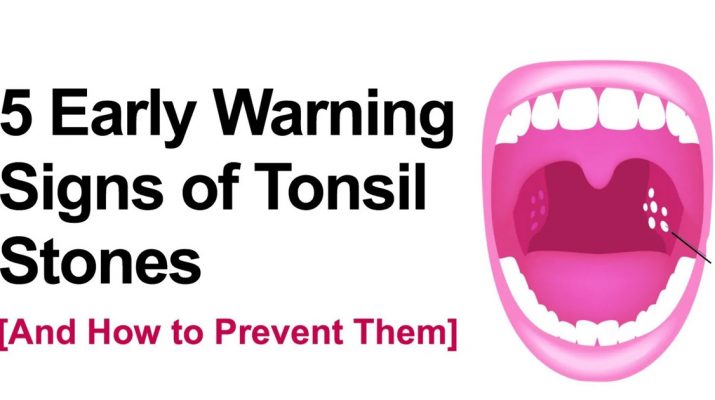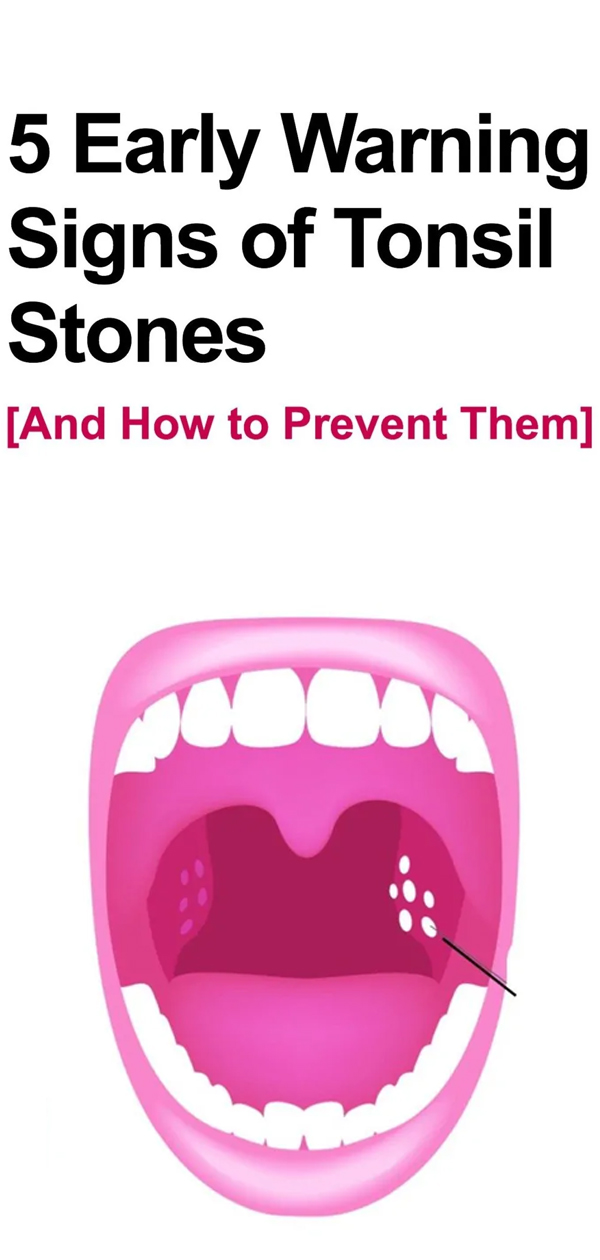What the heck are ‘ tonsil stones ’?
Tonsil stones are hardened yellow or white bumps that appear on the or within the tonsils. Small as a grain of rice, many people who acquire tonsil stones remain unaware of their presence.
After a period of time, the stones – which consist of food debris, dead cells, mucus, and saliva – can cause health complications. Bacteria and fungi also feed on tonsil stones, creating a highly distinct, unpleasant odor.
Why do tonsil stones appear?
We’re all born with two tonsils, which reside in a kidney-bean shaped crevice on both sides of the tongue near the pharynx. This area that constitutes our tonsils is full of nooks and crannies which allow various debris to settle. Over time, the debris may harden (or calcify) into stones.
What are the symptoms?
Provided that the tonsil stone is large enough, the ‘tonsillolith’ produces five main (sometimes early) symptoms.
Here Are The Symptoms:
1. Bad Breath
Also known as halitosis, progressively lousy breath often accompanies a tonsil stone. In one study of patients, researchers discovered that 75 percent of tonsil stones contain unstable sulfur compounds. Sulfur produces a notoriously bad smell, which is thought to be the catalyst for the terrible breath that accompanies the stones. This sulfur is produced by the anaerobic bacteria that feed on the stone’s debris.
2. Whitish Or Yellowish Debris
While some tonsil stones are visible in the back of the throat, some are hidden from view. Stones that are just visible are often surrounded by a solid, plaque-like white substance (similar to the substance that appears on the tongue.) Additionally, the stone may appear as tiny rocks that stay trapped in your mouth.
3. Secondary Oral Health Conditions
People who do not brush or floss their teeth on a regular basis are more vulnerable to tonsil stones. Poor oral health may also contribute to a second condition, namely gum disease, oral infections, or tooth decay. Furthermore, untreated tonsil stones may produce plaque-like patches at the back of the throat.
4. Trouble Swallowing
Swollen tonsils and tonsil stones can make it more difficult to swallow. Whether or not this symptom arises depends on the size and location of the tonsil stone. Difficulty swallowing is symptomatic of numerous medical conditions, so an exam may be necessary to determine the root cause.
5. Ear Pain
Tonsil stones can grow anyplace in or around the tonsil. Due to shared nerve pathways, they may cause a person to feel pain in the ear, even though the stone itself is not touching the ear.
Removing Tonsil Stones
There are a few possible ways to remove tonsil stones. Whether the stones become dislodged depends on individual cases, but the following may be helpful:
– Hard coughing: People sometimes cough up a tonsil stone accidentally. While not as effective as the other techniques, heavy coughing may loosen stones.
– Gargling with salt water: Besides easing the throat discomfort that accompanies tonsil stones, regular and vigorous gargling with salt water may help dislodge the stones.
– Physical removal: While not recommended (due to complications like bleeding and infection) using a cotton swab to push the stone forward may just dislodge the stones enough to remove.
Tonsil stones are most common in those who acquire chronic tonsillitis. The surgical removal of the tonsils (a tonsillectomy) eliminates the possibility of stones developing for this demographic. However, various research studies showing the high complication rate of the procedure (around 20 percent) and the severe conditions (e.g., deep infection of the tonsil, or tonsil abscess) are giving some a second pause.
Preventing Tonsil Stones
For the rest of us, Healthline recommends the following:
– Practicing good oral hygiene: Including cleaning the bacteria off the back of your tongue (with a tongue scraper) when you brush your teeth. Dentists also note that many people do not brush for the recommended amount of time: a minimum of 2-3 minutes (or 1 minute, 30 seconds on both the upper and lower teeth.)
– Quitting smoking and drinking plenty of water to stay hydrated.


